Join the ICONS
Dance ICONS is a global network for choreographers of all levels of experience, nationalities, and genres. We offer a cloud-based platform for knowledge exchange, collaboration, inspiration, and debate. Dance ICONS is based in Washington, D.C., and serves choreographers the world over.
Subscribe today to receive our news and updates. Become a member of your global artistic community -- join the ICONS!
STEPHANIE LAKE: MASS MOVEMENT

Canadian-born and Australian-bred choreographer Stephanie Lake was a late arrival on the dance scene but brought a wealth of imagination and ideas that had not been edited or impeded by formal training. Her performance career led her seamlessly into choreography, where her diverse body of works for Stephanie Lake Company has earned her an international reputation and a slew of prestigious awards, which she now tops with the resident choreographer of The Australian Ballet.
ICONS: What was your first dance influence?
Stephanie Lake: I grew up in a tiny village in the Canadian prairies, but I was always dancing around the house. So, I guess it was Madonna and Michael Jackson. I remember being intrigued by ballet on TV, but my first introduction to choreography, moving in formation and following music, was actually in ice skating.
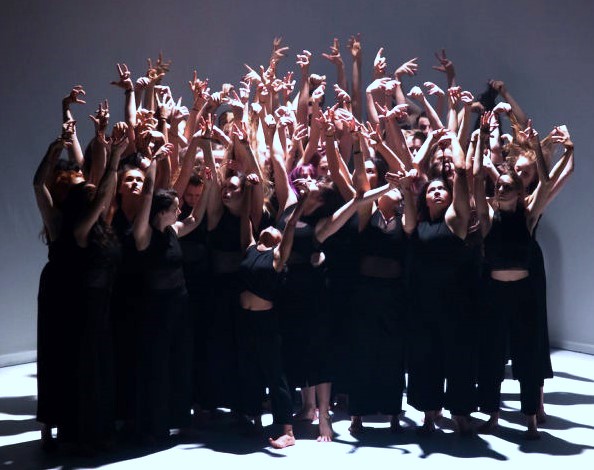
ICONS: When did you get into dance off the ice?
SL: I can remember, when I was about six, thinking that I'd invented the jeté. I remember jumping off one foot, flying through the air and landing on the other and thinking I've invented something incredible. I’d done no dance classes, but I was definitely getting into costumes, putting music on, and making up my own steps. It was once we moved to Australia that I found contemporary dance and it felt like I found my home. It was an instant click, and it felt so good.
ICONS: Who were the influential choreographers?
SL: I completed my dance degree in Melbourne where contemporary dance is all project based. Choreographers like Lucy Guerin, Gideon Obarzanek and Philip Adams lit the fire and really inspired me. There were also incredible visiting companies. I danced professionally on and off for 18 years and I was able to fill the gaps between dance contracts with creations of my own works.
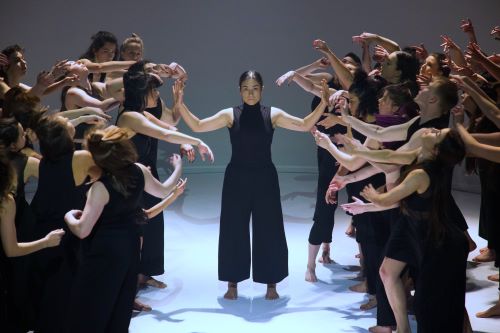
ICONS: Where does your inspiration come from?
SL: It's almost impossible to say. Early on it was music, film, and what was happening around me. But I think that the lasting inspiration has been the dancers themselves. That's been the connective tissue from the beginning.
ICONS: What do you need to have prepared before you walk into the studio on day one?
SL: By the time I'm actually on the floor with the dancers, there have been at least one or two years of preparation leading up to that moment. The seed has been planted, I’ve been building the team, choosing collaborators, dancers, and landing on the concept, then burrowing deep to find the core of the idea. I’ve started to develop a movement language on my own and explore where I'm headed. I often get drafts of the score and I’m thinking about design, staging, lighting, and costume. All of that has happened before I even step into the studio and start to choreograph.
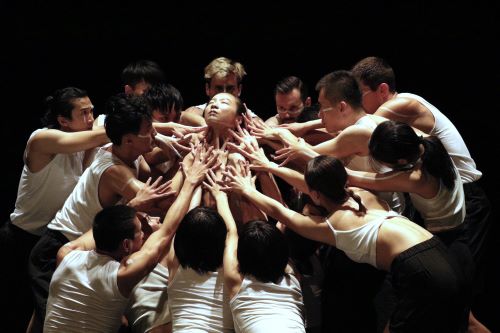 ICONS: Do you prefer found music or working with a composer?
ICONS: Do you prefer found music or working with a composer?
SL: Early in my career I worked a lot with songs, with familiar music and pieces that I loved, partly to give the audience an access point. Contemporary dance has a reputation for being alienating and it's been my mission to make it more accessible. While I love the ambiguity and the strangeness of dance, I also want the audience to connect with what they're seeing.
Now I collaborate mostly with my partner, Robin Fox, who’s a composer. I find it deeply fulfilling and exciting for the music to be alive and respond to what's happening in the studio. We actually develop the world together.
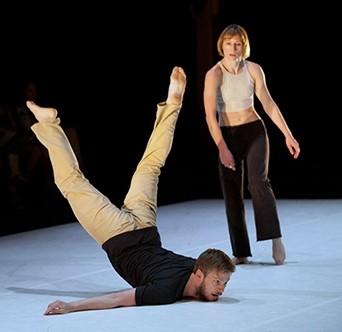
ICONS: Do you try out ideas with favourite dancers before you start on a commission?
SL: Typically, I don't because I really like to meet dancers where they are and involve them entirely in the process from day one so they feel like the show is theirs. There's something really special about being part of the process of creating a new work and creating something out of nothing—it's alchemy! It's precious to me how those initial baby steps suddenly morph into something wonderful. I want the dancers to have the backstories, the sedimentary rock, the memories of how the work has been made, layered in their bodies.
ICONS: You have your own company and you also work as a freelance choreographer. What are the advantages and disadvantages?
SL: There is something really comfortable about working with dancers I’ve worked with for ten or fifteen years. The depth of friendship and trust is special and it means that there's a fantastic shorthand, creatively. I can just trigger something choreographically and we're away, because there's a shared language. For a choreographer, that's precious. The work I make is very collaborative. But I think it's healthy to have both experiences. It’s exciting walking into a studio and not knowing anyone. Working with new artists is thrilling and it helps me refuel.
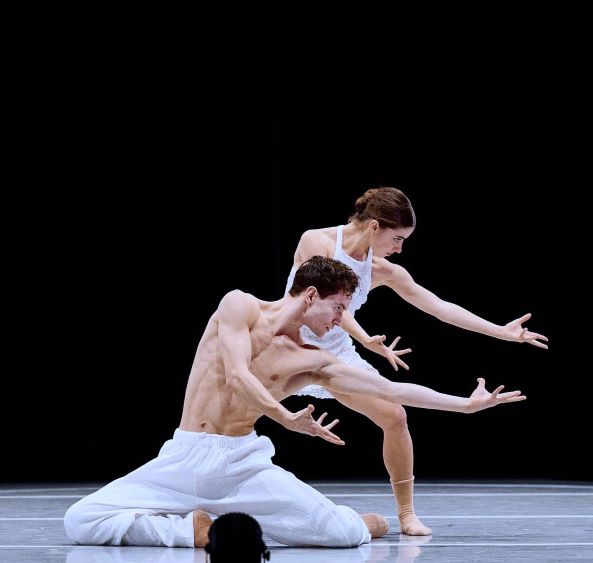
Working with The Australian Ballet has led me to crystalline places. The dancers’ incredible classical technique and the discipline in their bodies brings a whole other dimension to my choreographic work. It's exciting for me to see ballet dancers let loose, unshackle. It’s wonderful that the boundaries between classical and contemporary dance are not so clearly defined and I'm thrilled to be appointed resident choreographer. I come from a contemporary background and here I am in the national ballet company. I feel very privileged and excited as we move into new territory together.
ICONS: What atmosphere do you try to create in the studio?
SL: I try to create a richly creative environment and expect absolute respect for one another, a sense of play and freedom, and being able to throw things at the wall and see how it goes without judgement. The dancers are putting themselves on the line, they're risking injury, they work so hard and sweat bullets all day so I try to make it as much fun as possible. We laugh a lot.
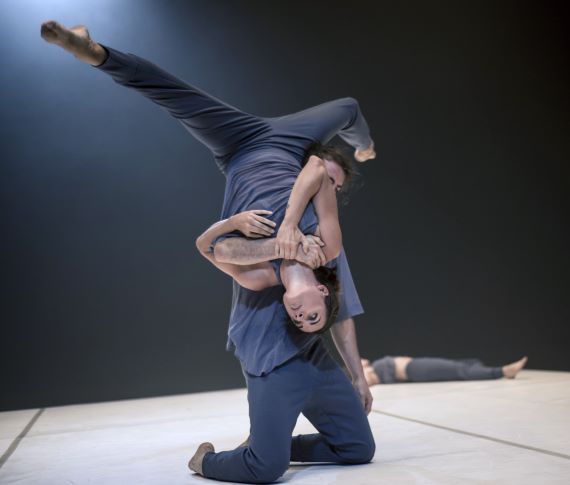
ICONS: What's the happiest time for you as a choreographer in the studio—getting into the theatre or seeing a finished product?
SL: There’s quite an adjustment moving from the studio where you're two meters away from the dancers with the sweat flying in your face, to a big theatre where you're kind of looking at them through a long lens. But I love tech week. I love the feeling like we're just about to cross a bridge. I really love watching all the elements of lighting, sound, and staging coming together and seeing the work start to land.
There’s a rising excitement, the anticipation of the show being introduced to audiences—and then opening night is an absolute nightmare for me. I get so nervous and it's very hard for me to enjoy it. The relief afterwards is like a big adrenaline surge, but I tremble through the entire opening night every time.
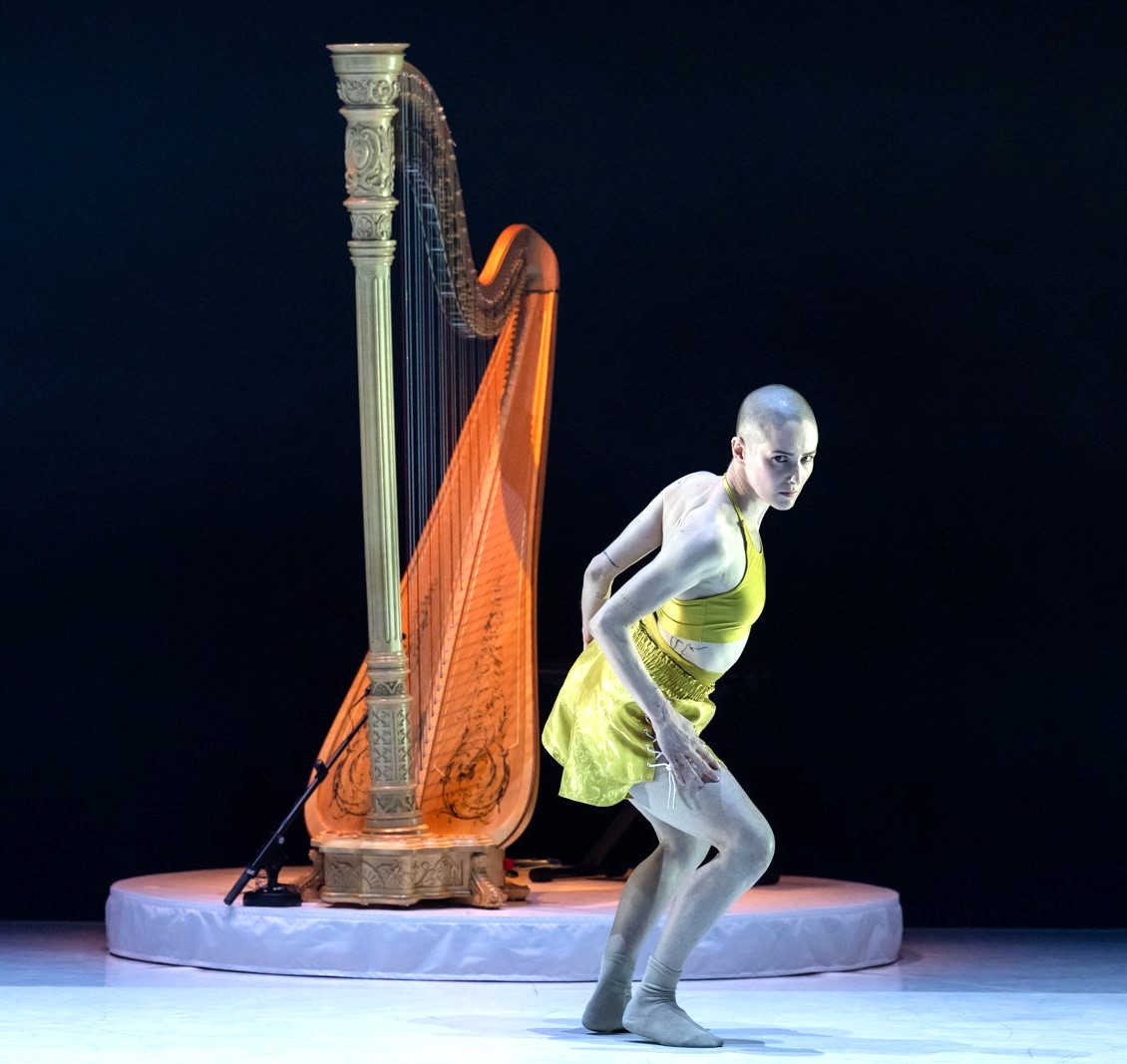 ICONS: Tell us about your current projects?
ICONS: Tell us about your current projects?
SL: MASS MOVEMENT opens the Adelaide Festival on March 1, 2025. It’s a work for one thousand dancers, from all backgrounds, all genres of dance and all ages. We have participants ranging from 12 to 88 years old. 1000 dancers are coming together and learning the choreography I’ve created with dancers from Stephanie Lake Company and from The Australian Ballet. It’s incredibly special, very heartwarming. It makes me feel optimistic when people move together. A simple gesture, expanded out on hundreds of people is really moving. It’s going to be a monumental event.
In January, my company has the world premiere season of The Chronicles at Sydney Festival. It’s a work for twelve dancers, a children's choir, and a solo singer, exploring life cycles and mortality. The Chronicles will tour Australia in 2025. My next commission for The Australian Ballet will be part of a triple bill called Prism alongside works by Forsythe and Robbins, which is thrilling.
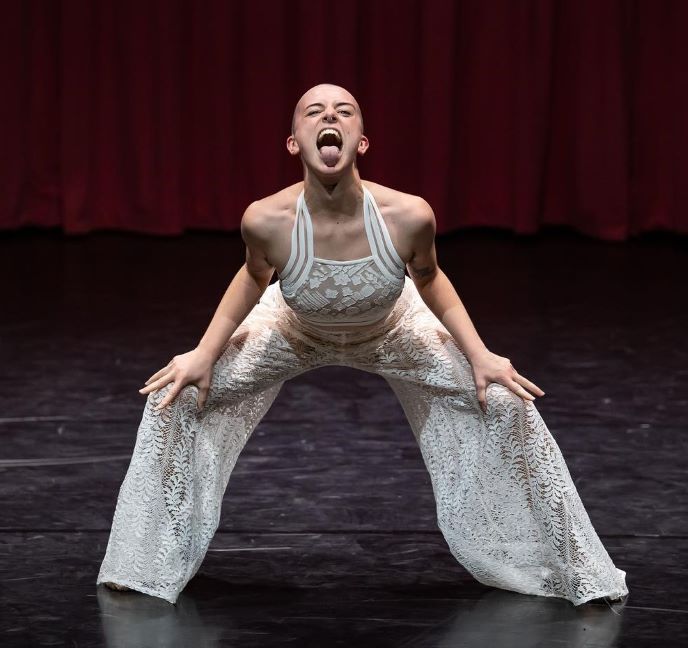
ICONS: What would you say is consistent and what is variable in your work?
SL: I think consistent would be a level of interest, intricacy, and detail in the movement and an explosive physicality paired with an emotional underpinning. The feedback I most commonly get from audience members is that they felt something in the level of energy and the commitment from the dancers that gave them an emotional reaction, a visceral response. That's been consistent from the beginning—this desire to connect. The variable comes from the new circumstances and new collaborations that I am presented with and that’s the part that excites me.
ICONS: What advice would the Stephanie of today give to young Stephanie?
SL: I'm not sure that I would do anything differently because my mistakes were important in leading to where I am now, which is absolutely wonderful. Actually, being a bit unformed and a bit undisciplined, in my early years, enabled a creative freedom. Not being locked down by a particular technique led to an openness.
The journey is what it is and the fact that I started dancing relatively late meant that I pushed harder. Over the years I've pursued things that I wanted so much and was disappointed when I failed, but the plan B has turned out to be far better than I could have hoped. So, maybe the advice I'd give myself is to relax. Setbacks are inevitable and will continue. You've got to be very resilient in this business.

ICONS: What are your thoughts about the future of dance?
SL: There was an article I saw recently that was looking at the influence of AI on the work force. It identified three ‘safe’ jobs and one of them was ‘choreographer’. Who would have thought going to university to study interpretive dance would end up being a safe career choice?
I think in the future we will crave even more connection to our physical body, which is our home. Seeing great dance works is a completely transcendental experience. I hope that, in the near future, dance is more valued and takes its rightful place in culture.
* * * * * * *
BIOGRAPHICAL REFERENCE:
https://www.stephanielake.com.au/stephanie-lake
PHOTOGRAPHY REFERENCES:
All photos courtesy of Stephanie Lake Dance Company, Inc.
VIDEO REFERENCES:
and
INTERVIEW'S CREATIVE TEAM ACKNOWLEDGMENTS:
Interviewer: Maggie Foyer
Executive Content Editor: Camilla Acquista
Executive Assistant: Charles Scheland
Executive Director: Vladimir Angelov
Dance ICONS, Inc., January 2025 © All rights reserved
![]()


